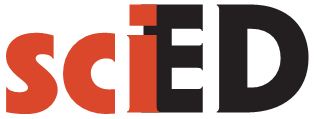Abstract
Editorial.
References
Dees, J., Momsen, J. L., Niemi, J., & Montplaisir, L. (2014). Student Interpretations of Phylogenetic Trees in an Introductory Biology Course. CBE—Life Sciences Education, 13(4), 666-676. https://doi.org/10.1187/cbe.14-01-0003
Erol, H. (2017). An evaluation on functionality of the workbook for social studies for the 7th graders. Pegem Egitim ve Ogretim Dergisi= Pegem Journal of Education and Instruction, 7(1), 1. https://doi.org/http://dx.doi.org/10.14527/pegegog.2017.001
Halverson, K. L., Pires, C. J., & Abell, S. K. (2011). Exploring the complexity of tree thinking expertise in an undergraduate systematics course. Science Education, 95(5), 794-823. https://doi.org/https://doi.org/10.1002/sce.20436
Harrison, A. G. (2001). How do teachers and textbook writers model scientific ideas for students? Research in Science Education, 31, 401-435. https://doi.org/https://doi.org/10.1023/A:1013120312331
Hejný, M. (2012). Exploring the cognitive dimension of teaching mathematics through scheme-oriented approach to education. Orbis scholae, 6(2), 41-55. https://doi.org/10.14712/23363177.2015.39
Chiappetta, E. L., & Fillman, D. A. (2007). Analysis of five high school biology textbooks used in the United States for inclusion of the nature of science. International Journal of Science Education, 29(15), 1847-1868. https://doi.org/10.1080/09500690601159407
Jian, Y.-C. (2021). The immediate and delayed effects of text–diagram reading instruction on reading comprehension and learning processes: evidence from eye movements. Reading and Writing, 34(3), 727-752. https://doi.org/10.1007/s11145-020-10089-3
Johnstone, A. H. (1991). Why is science difficult to learn? Things are seldom what they seem. Journal of Computer Assisted Learning, 7(2), 75-83. https://doi.org/10.1111/j.1365-2729.1991.tb00230.x
Lai, M. L., Tsai, M. J., Yang, F. Y., Hsu, C. Y., Liu, T. C., Lee, S. W. Y., Lee, M. H., Chiou, G. L., Liang, J. C., & Tsai, C. C. (2013). A review of using eye-tracking technology in exploring learning from 2000 to 2012. Educational Research Review, 10, 90-115. https://doi.org/10.1016/j.edurev.2013.10.001
Lepik, M., Grevholm, B., & Viholainen, A. (2015). Using textbooks in the mathematics classroom – the teachers’ view Nordic Studies in Mathematics Education, 20(3-4), 129-156. http://arkiv.ncm.gu.se/node/7993
Lockwood, E., & Gibson, B. R. (2016). Combinatorial tasks and outcome listing: Examining productive listing among undergraduate students. Educational Studies in Mathematics, 91(2), 247-270. https://doi.org/10.1007/s10649-015-9664-5
Mullis, I. V., Martin, M. O., Foy, P., & Arora, A. (2012). TIMSS 2011 international results in mathematics. TIMSS & PIRLS International Study Center. https://timss.bc.edu/timss2011/downloads/T11_IR_Mathematics_FullBook.pdf
Sikorová, Z. (2005). Transforming curriculum as teacher’s activity. In M. Horsley, S. V. Knudsen, & S. Selander (Eds.), Has Past Passed? Textbooks and Educational Media for the 21st Century (pp. 256-261). Stockholm Institute of Education Press.
Son, J.-W., & Kim, O.-K. (2015). Teachers’ selection and enactment of mathematical problems from textbooks. Mathematics Education Research Journal, 27(4), 491-518. https://doi.org/10.1007/s13394-015-0148-9
Šubová, Š. (2020). Analýza didaktické vybavenosti učebnic chemie pro základní školy v ČR [Diplomová práce, Univerzita Karlova, Pedagogická fakulta, katedra chemie a didaktiky chemie]. Praha.
Taber, K. S. (2013). Revisiting the chemistry triplet: drawing upon the nature of chemical knowledge and the psychology of learning to inform chemistry education. Chemistry Education Research and Practice, 14(2), 156-168. https://doi.org/10.1039/C3RP00012E
Talanquer, V. (2011). Macro, submicro, and symbolic: the many faces of the chemistry “triplet”. International Journal of Science Education, 33(2), 179-195. https://doi.org/10.1080/09500690903386435
Vojíř, K., & Rusek, M. (2021). Preferred Chemistry Curriculum Perspective: Teachers’ Perception of Lower-Secondary School Textbooks. Journal of Baltic Science Education, 20(2), 316-331. https://doi.org/10.33225/jbse/21.20.00
Authors who publish with this journal agree to the following terms:
- Authors retain copyright and grant the journal right of first publication with the work simultaneously licensed under a Creative Commons Attribution License that allows others to share the work with an acknowledgement of the work's authorship and initial publication in this journal.
- Authors are able to enter into separate, additional contractual arrangements for the non-exclusive distribution of the journal's published version of the work (e.g., post it to an institutional repository or publish it in a book), with an acknowledgement of its initial publication in this journal.
- Authors are permitted and encouraged to post their work online (e.g., in institutional repositories or on their website) prior to and during the submission process, as it can lead to productive exchanges, as well as earlier and greater citation of the published work (See The Effect of Open Access).
